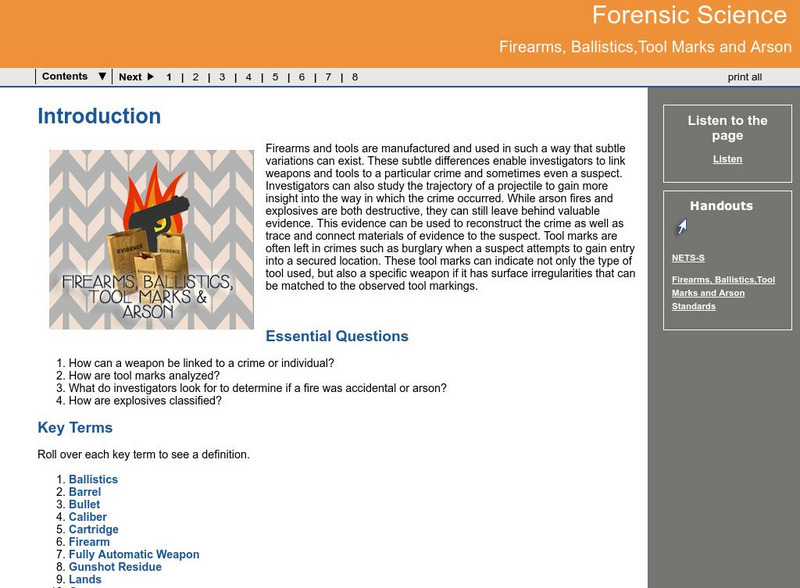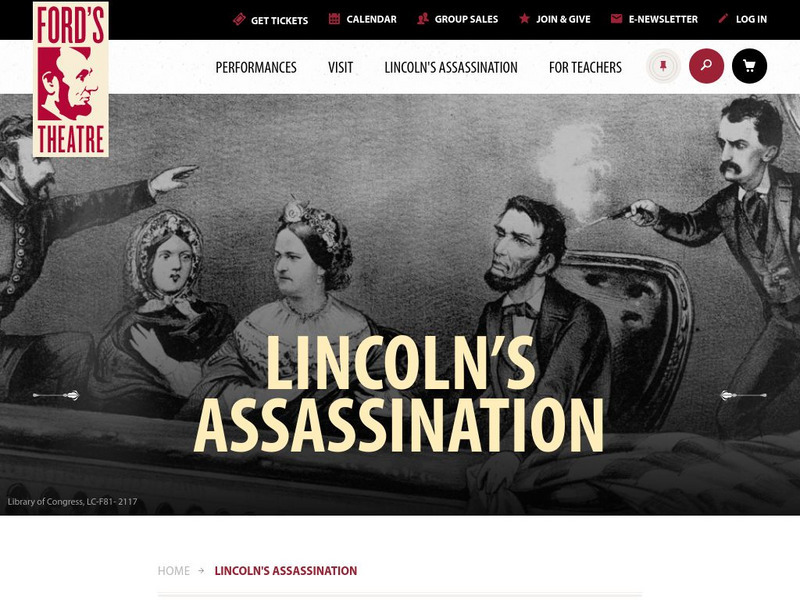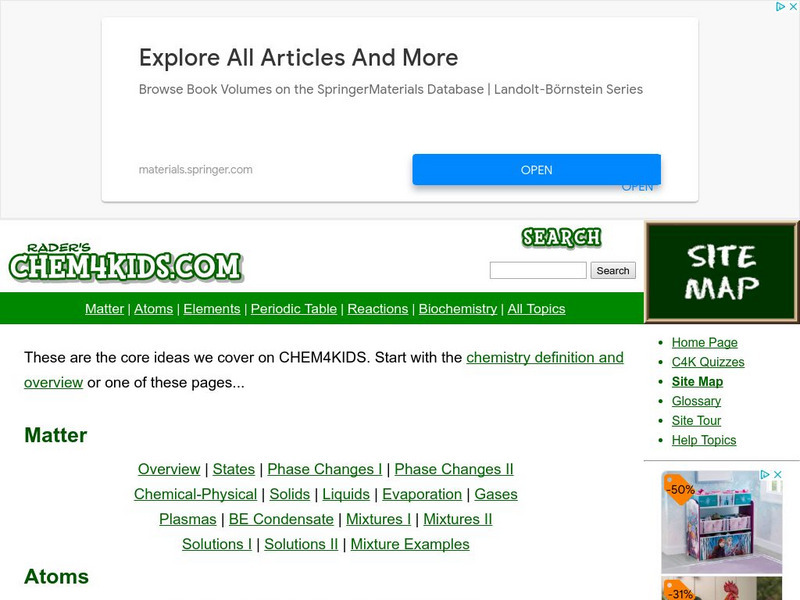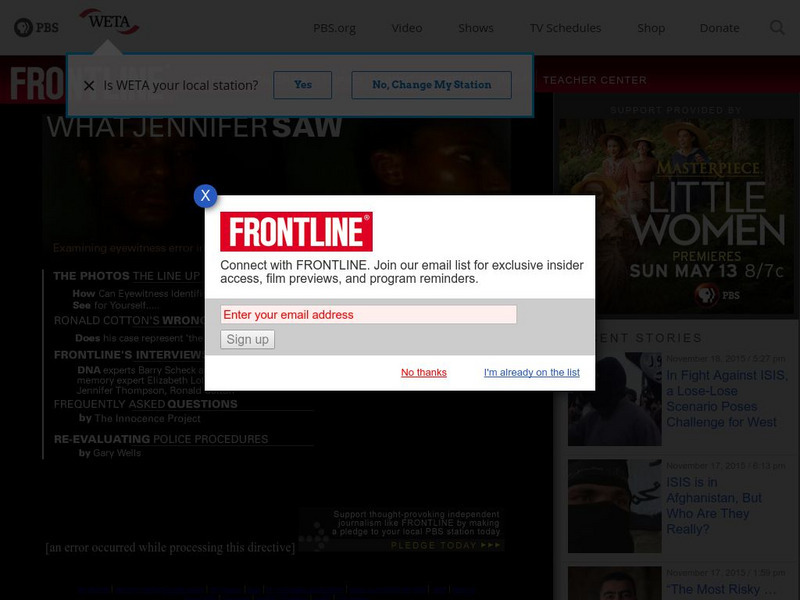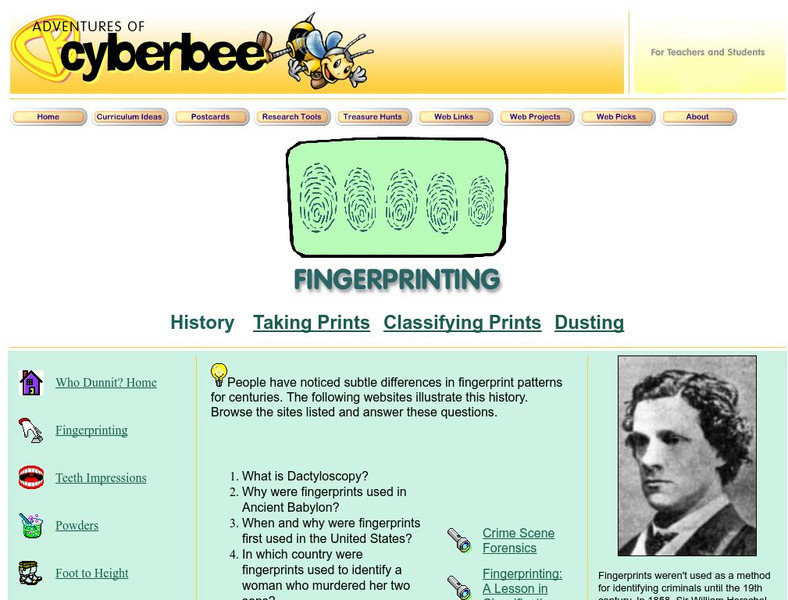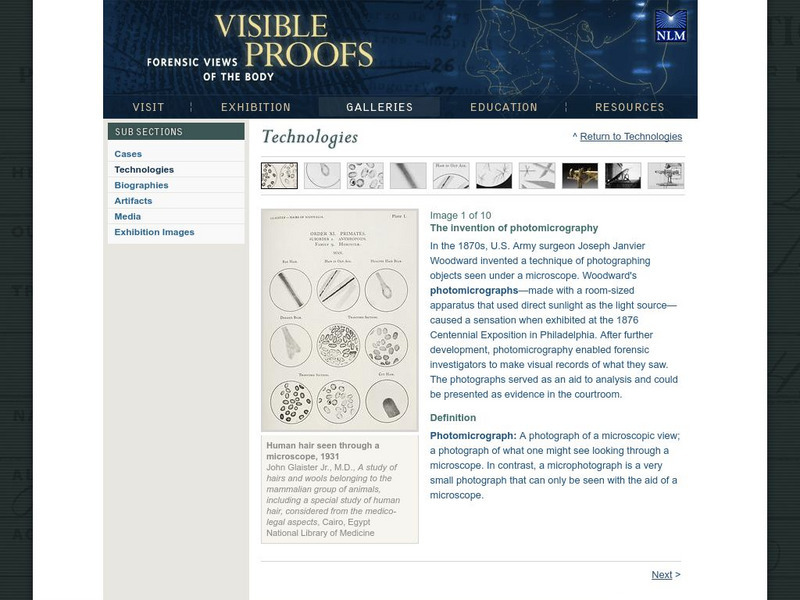Georgia Department of Education
Ga Virtual Learning: Forensic Entomology
In this comprehensive interactive tutorial you will investigate the area of entomology and how it applies to forensic science. Learn what information a forensic entomologist can determine from a crime scene and a victim's body. Other...
Georgia Department of Education
Ga Virtual Learning: Forensic Serology
In what ways does serological evidence help solve a crime? This comprehensive learning tutorial explores what information can be determined from a drop of blood and how blood typing is done. Learn what information we get from blood stain...
Georgia Department of Education
Ga Virtual Learning: Firearms, Ballistics,tool Marks and Arson
In this interactive tutorial you will learn how firearms and tools are manufactured and used in such a way that subtle variations can exist. These subtle differences enable investigators to link weapons and tools to a particular crime...
Federal Bureau of Investigation
Fbi History: Famous Cases and Criminals: The Lindbergh Kidnapping
The FBI presents the facts behind one of its most famous cases, the Lindbergh kidnapping. Presented in a timeline format, the site explores the Lindbergh kidnapping, ensuing ransom demands, investigation of the crime, Hauptmann's...
Other
Ford's Theatre: Lincoln's Assassination
Lincoln was assassinated at Ford's Theatre in full view of a packed audience. Many questions remain unanswered such as whether this was a lone act or part of a conspiracy. Conduct your own investigations using the features from this...
Chem4kids
Chem4 Kids: Chemistry Careers
Chem4Kids! looks at careers available in the large field of chemistry. Here you can explore the career of a doctor, pharmacist or pharmacologist, university researcher, forensics expert, or hazardous materials expert.
Curated OER
Crime and Investigation Network: Kate and George Barker: Photograph
Black and white photograph of Kate and George Barker.
Other
Science Spot: Forensic Science Lesson Plans
Huge collection of teacher-created lessons, activities, PowerPoint presentations, and worksheets for classes in forensic science.
Oak Ridge National Laboratory
Oak Ridge National Laboratory: Dna Forensics
A concise explanation of the use of DNA technologies in forensic identification from the Oak Ridge National Laboratory. Additional valuable resources are provided.
PBS
Pbs: What Jennifer Saw
How can eyewitness identification go wrong? What role can DNA play in protecting the innocent? This interesting site answers these questions and gets the opinions of several DNA experts on this fascinating subject.
Cyberbee
Fingerprinting
Learn everything you ever wanted to know about fingerprinting! Provides links to a brief history of fingerprinting, FBI Kids site, a lesson in classification, fingerprinting identification and a game.
Federal Bureau of Investigation
Fbi History: Famous Cases: A Byte Out of History: Elliot Ness and the Fbi
Read the real story behind the relationship between the FB and Eliot Ness during the prohibition era of American history.
Other
Teachers First: Lessons: Who Did It? Forensics to Hone Science and Lab Skills
Comprehensive twenty-activity unit, complete with a WebQuest and assessment materials, designed to introduce forensic science to middle schoolers in grades 6, 7, and 8.
National Institutes of Health
National Library of Medicine: Reading Gunshot Patterns
Various pictures of parts of the human anatomy showing gun shot trauma are found on this interesting site. .
National Institutes of Health
National Library of Medicine: The Invention of Photomicrography
The technique of photographing objects observed under a microscope is discussed in this succinct site. Various pictures taken under a microscope are displayed on this site as well.
National Institutes of Health
National Library of Medicine: Entomology in Action
Two lesson plans are found in this site. Lesson Plan 1 is geared to grades 6-9. In this plan, student's will be able to list the different stages of the blow fly's life cycle and understand how the life cycle and ADH (accumulated degree...
National Institutes of Health
National Library of Medicine: Dna a Molecular Identity
In this lesson plan site, students learn about DNA and examine three different situations where DNA was used to solve a case.
PBS
Pbs: Interview With Jim Liebman, Constitutional Law Professor at Columbia Univ.
Does innocence matter in our criminal justice system? Don't the DNA cases show that we are not getting the right outcome in more cases than we previously thought?
National Institutes of Health
National Library of Medicine: Key Accomplishments, Dna
A brief history of the major discoveries related to DNA from 1865 until 1991. Pictures of the responsible reponsibile for these key accomplishments are included as well.
National Institutes of Health
National Library of Medicine: The Marsh Test
The Marsh Test, developed in 1832, was designed to detect poison in drinks. A short history of this test is provided along with photo of the test apparatus.
National Institutes of Health
National Library of Medicine: Key Accomplishments, Radiology
A history of radiology is featured from 1901 until 2003. Succinct paragraphs cover the highlights of each discvery.
National Institutes of Health
National Library of Medicine: Spectral Detection
This concise site provides a brief discussion of the invention of the first work spectroscopes and their impact on forensic science.
National Institutes of Health
National Library of Medicine: Key Accomplishments, Toxicology
The history of toxicology is discussed from 1702 through 1966. Explanations of major discoveries are brief and to the point.
National Institutes of Health
National Library of Medicine: Virtopsy, the Virtual Autopsy
An interesting site that delves into how forensic scientists perform minimally invasive autopsies using state of the art technology.




